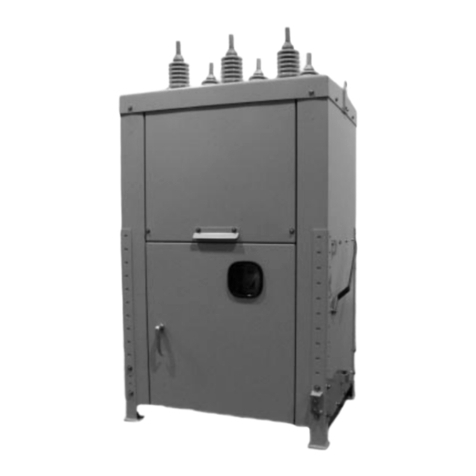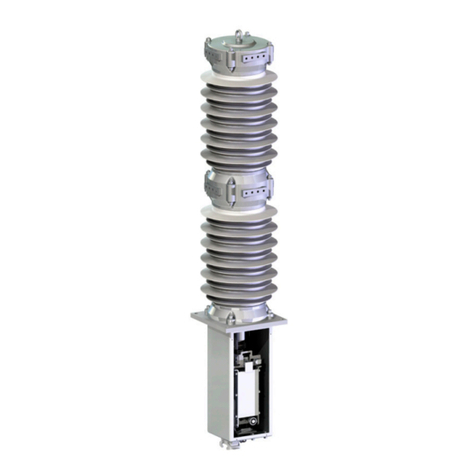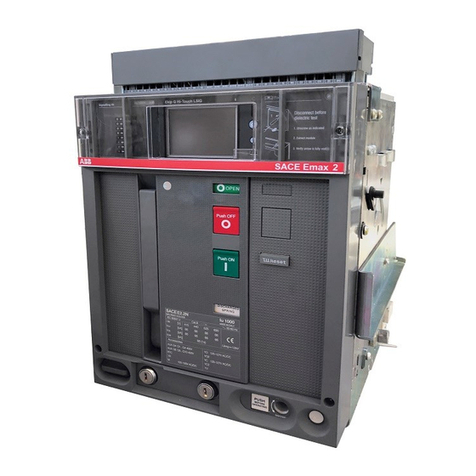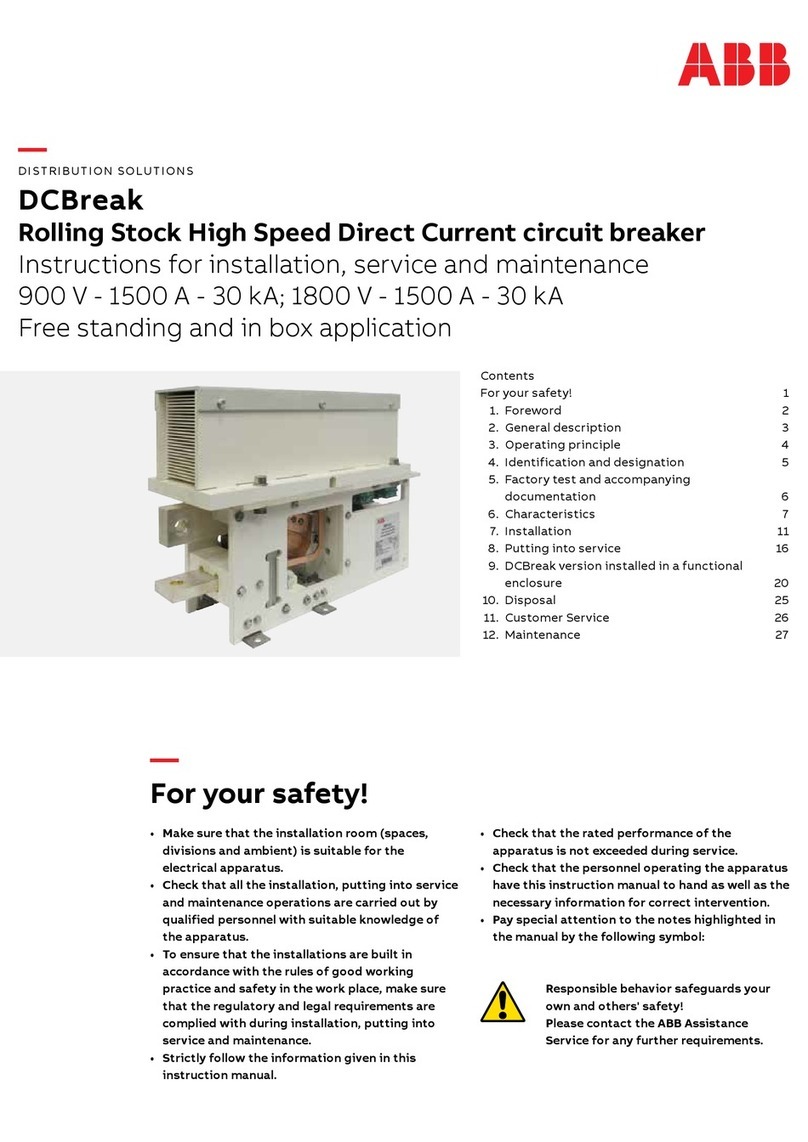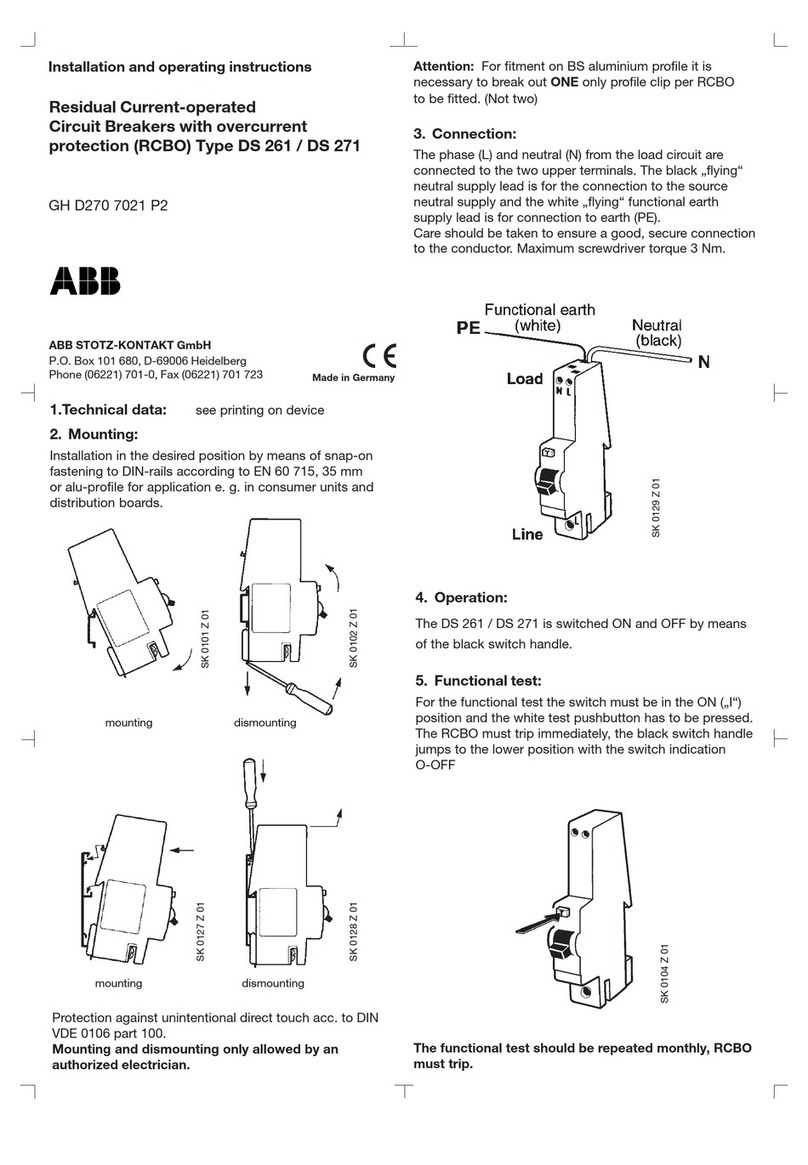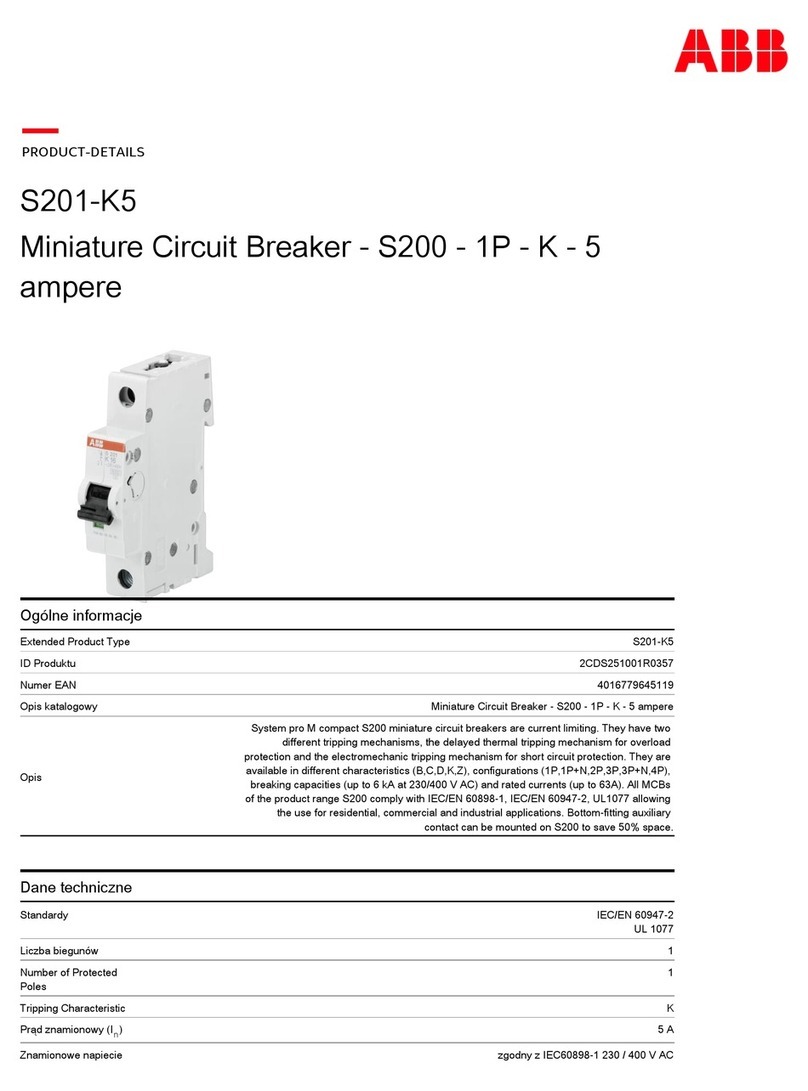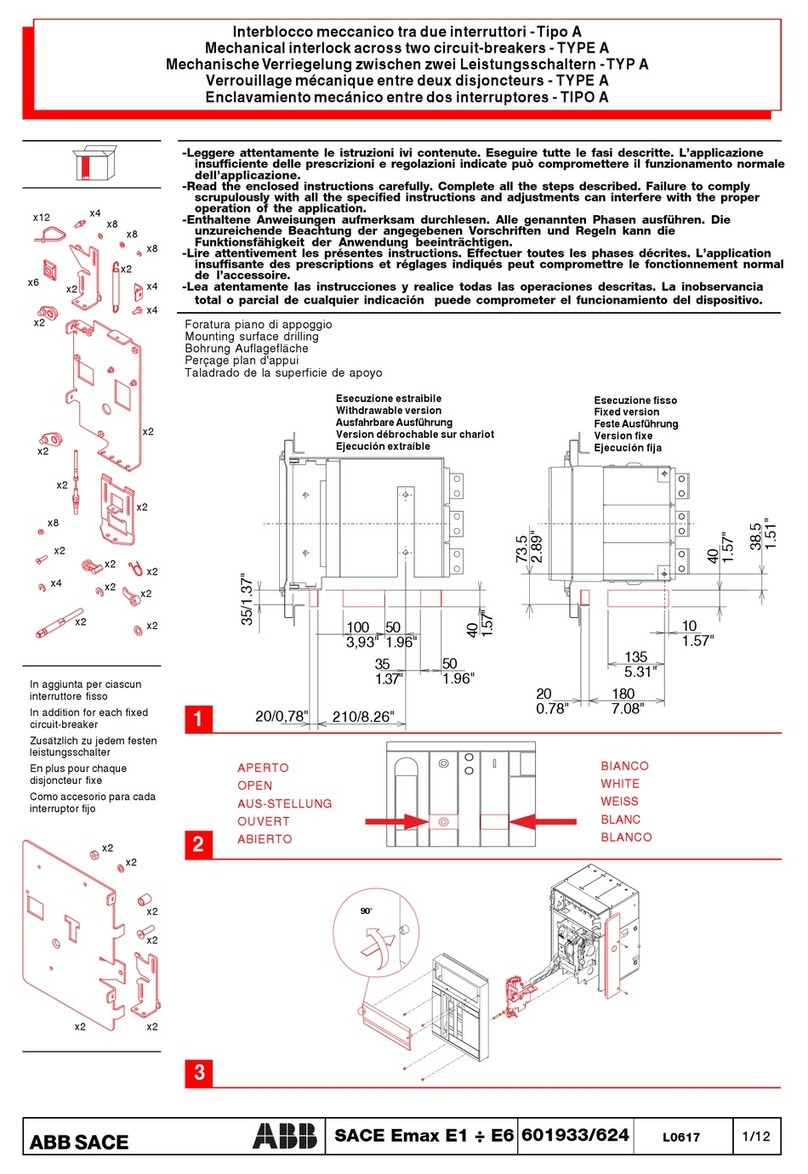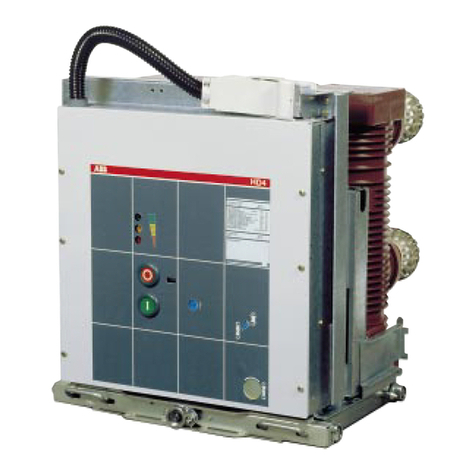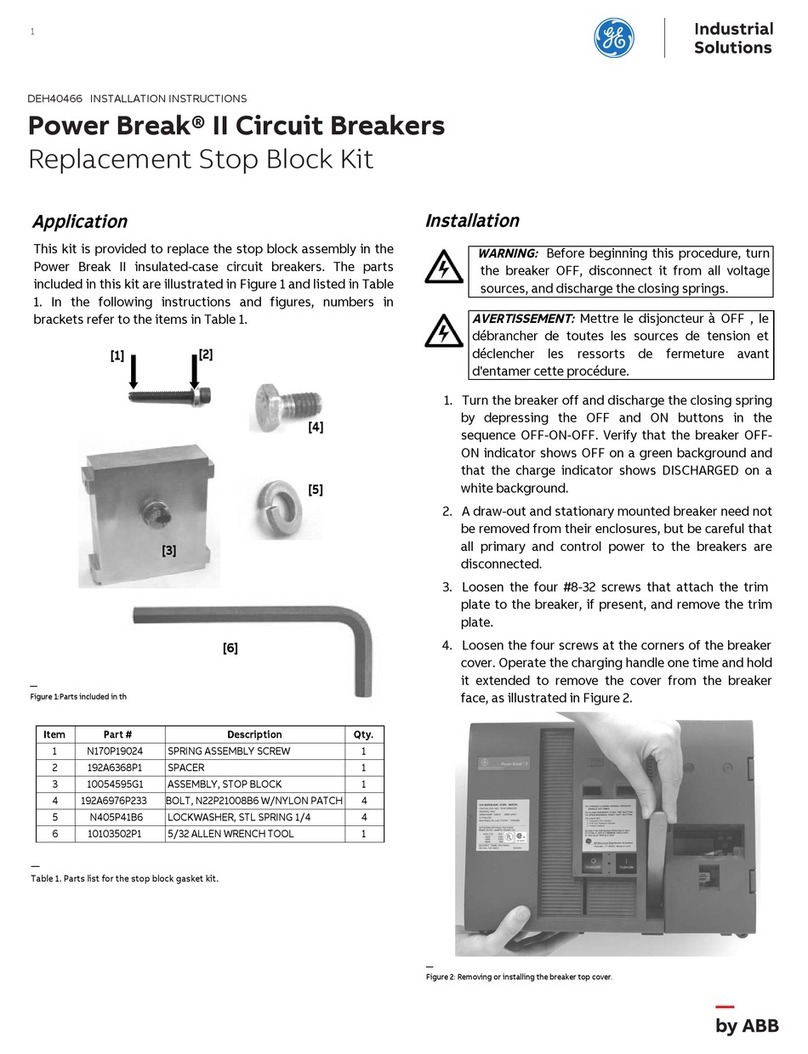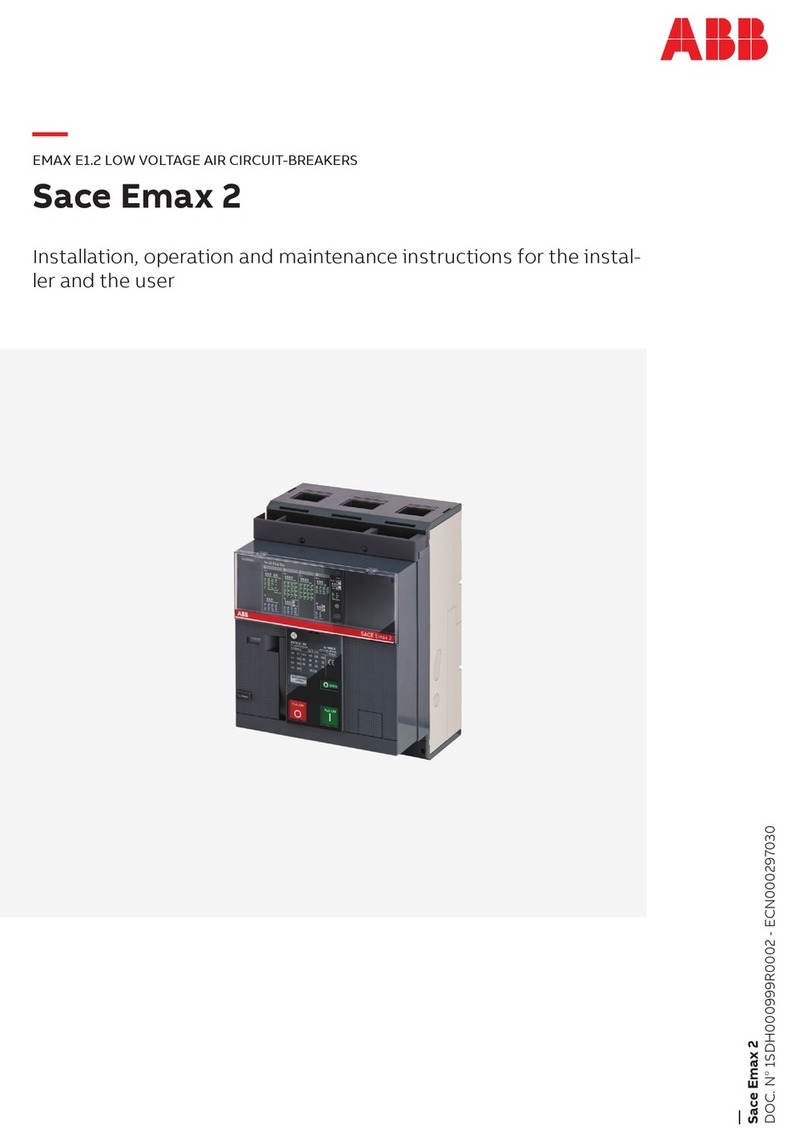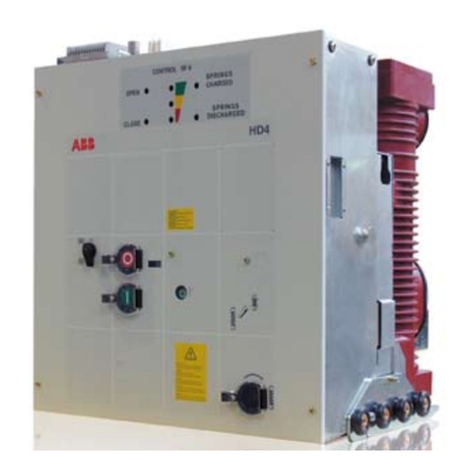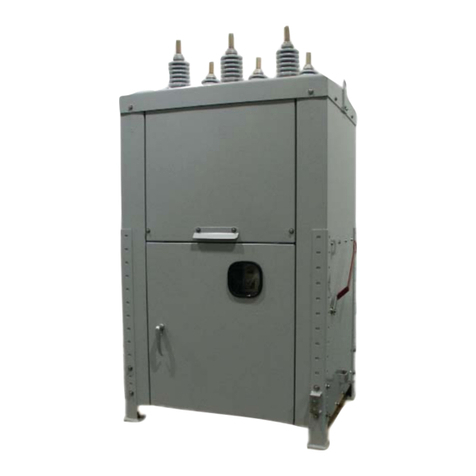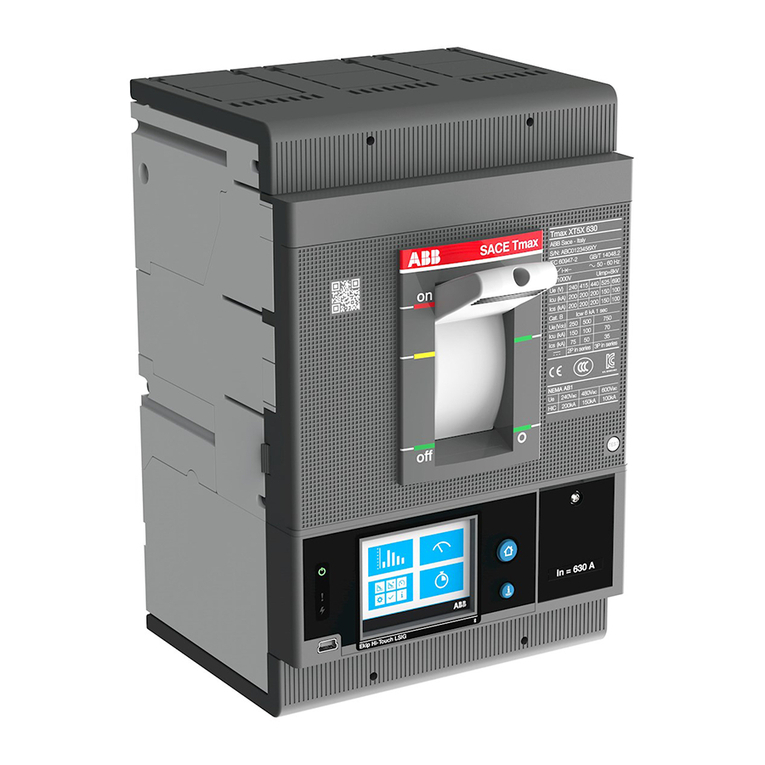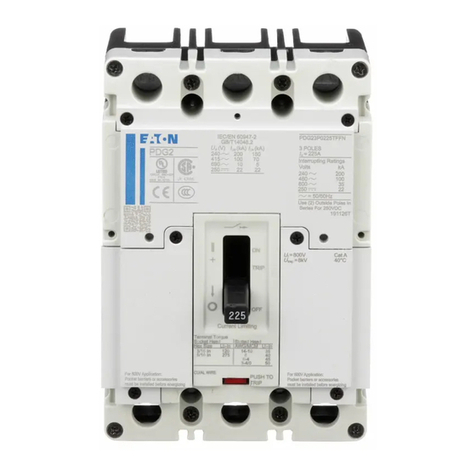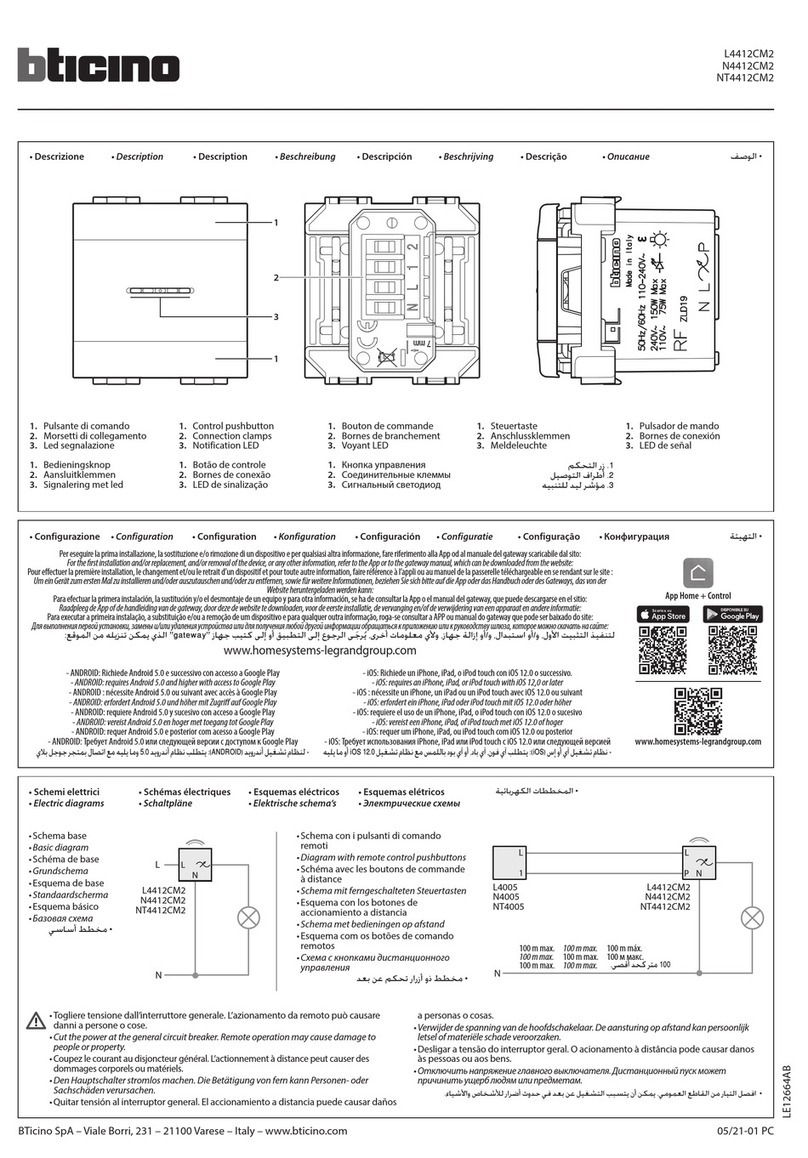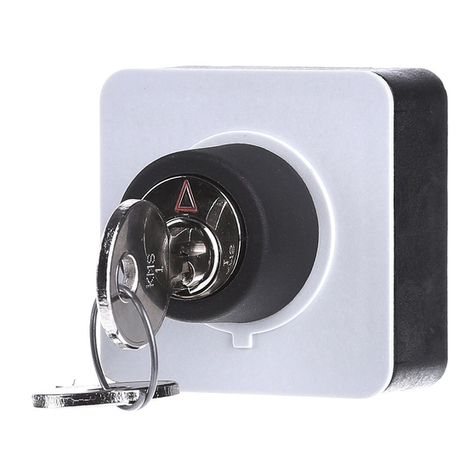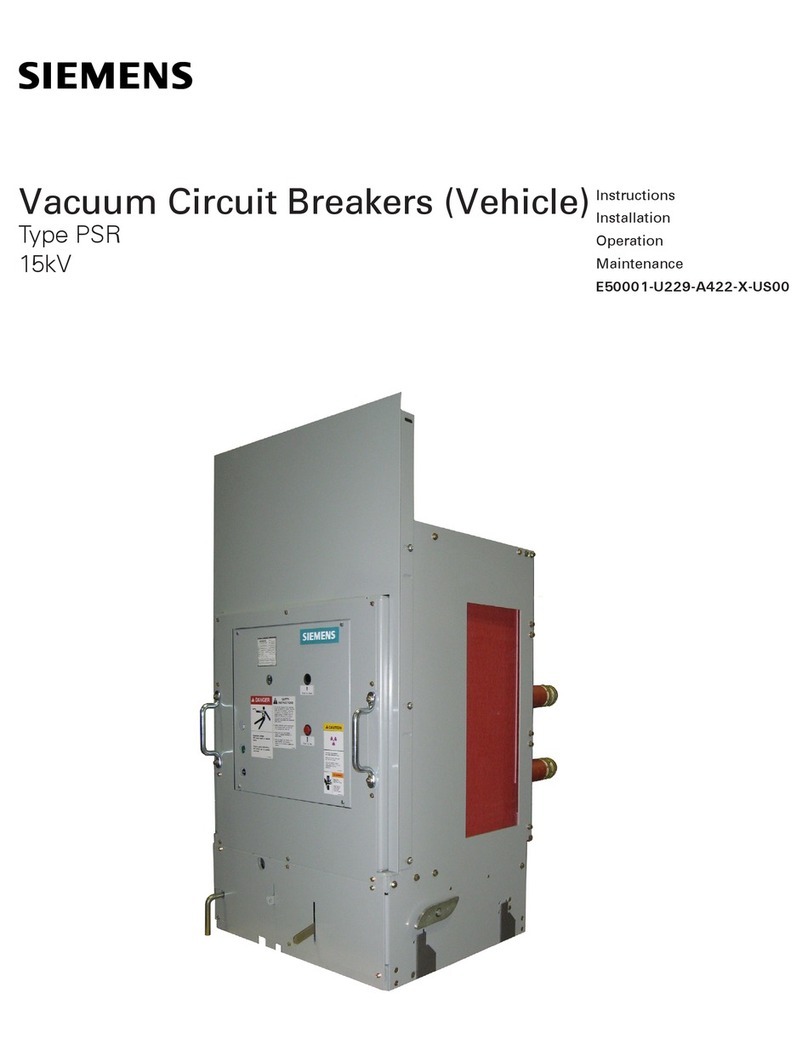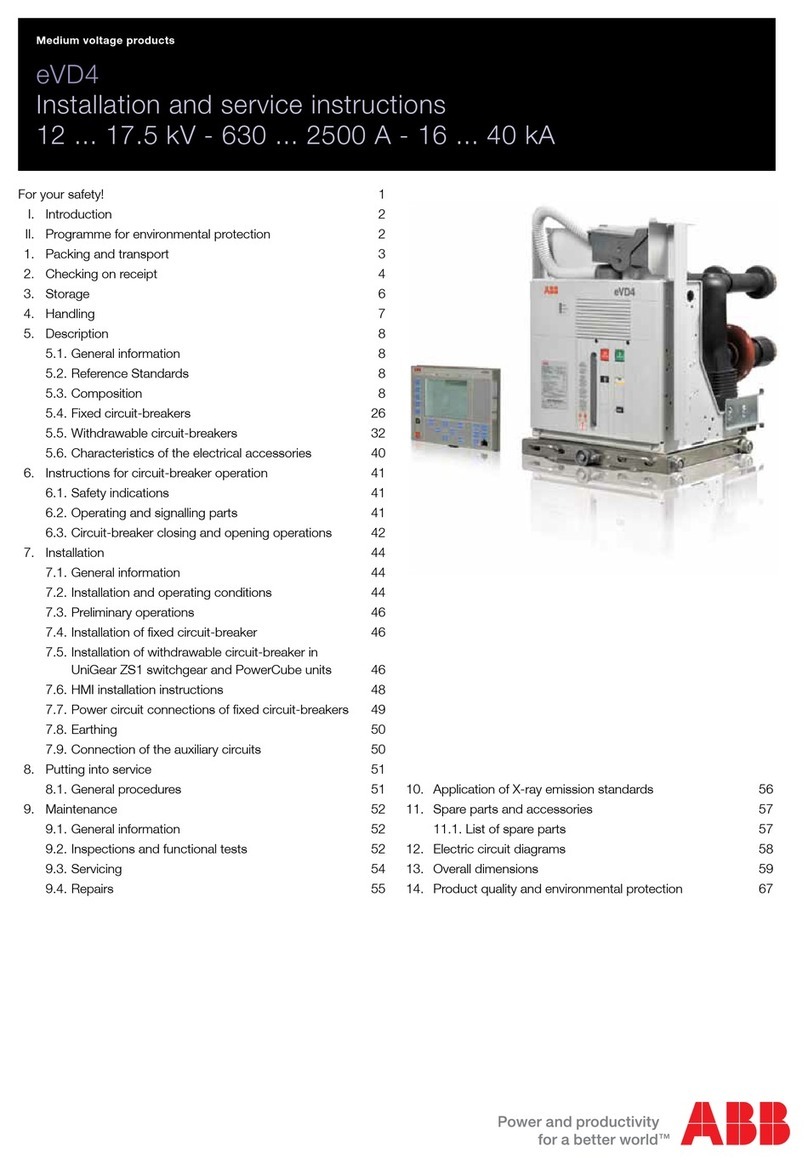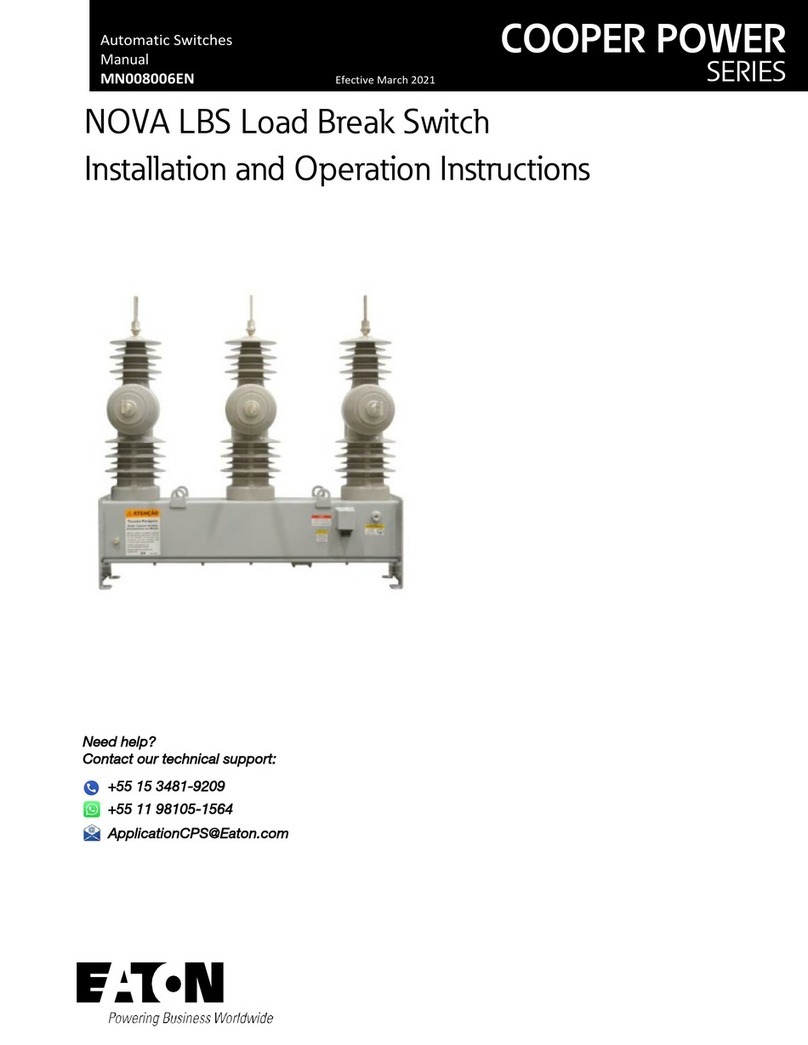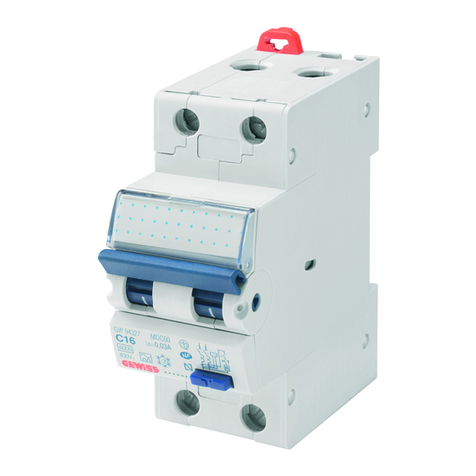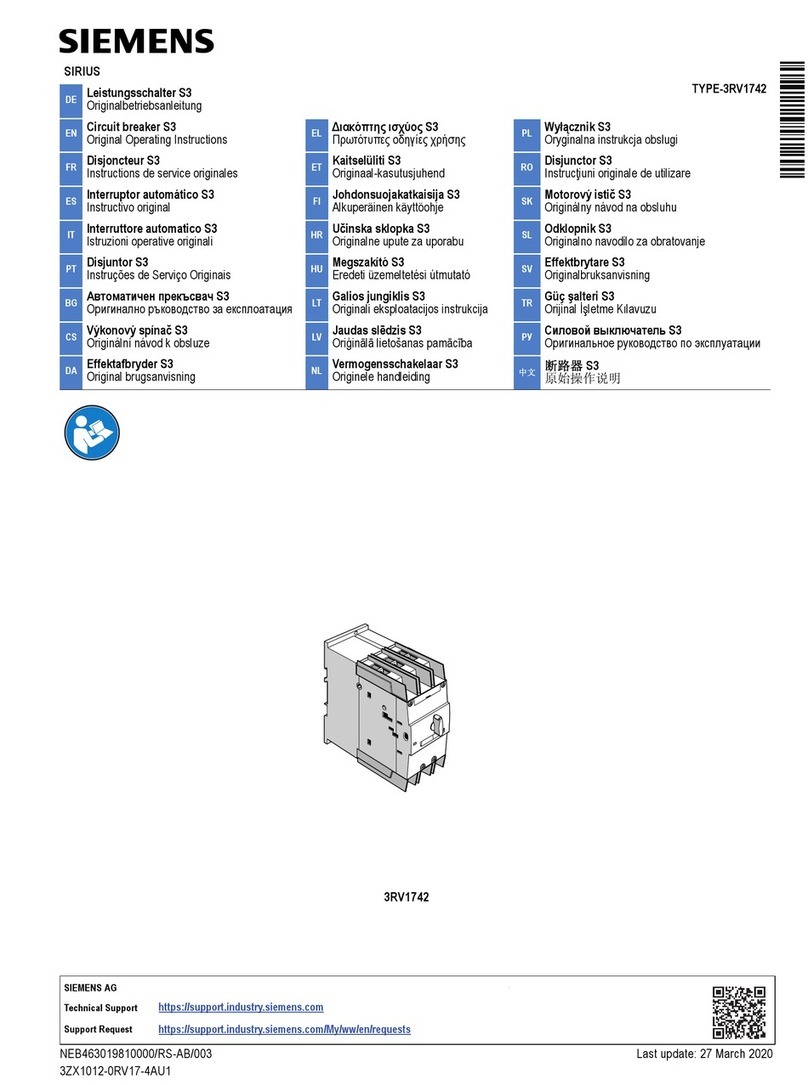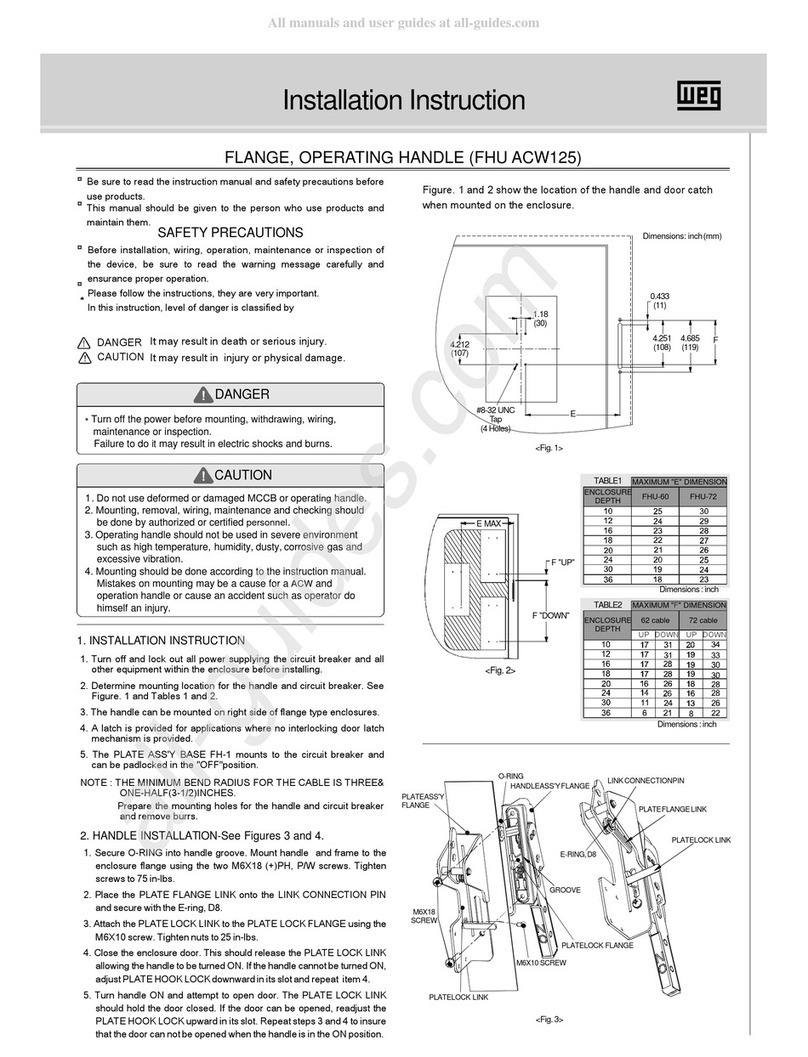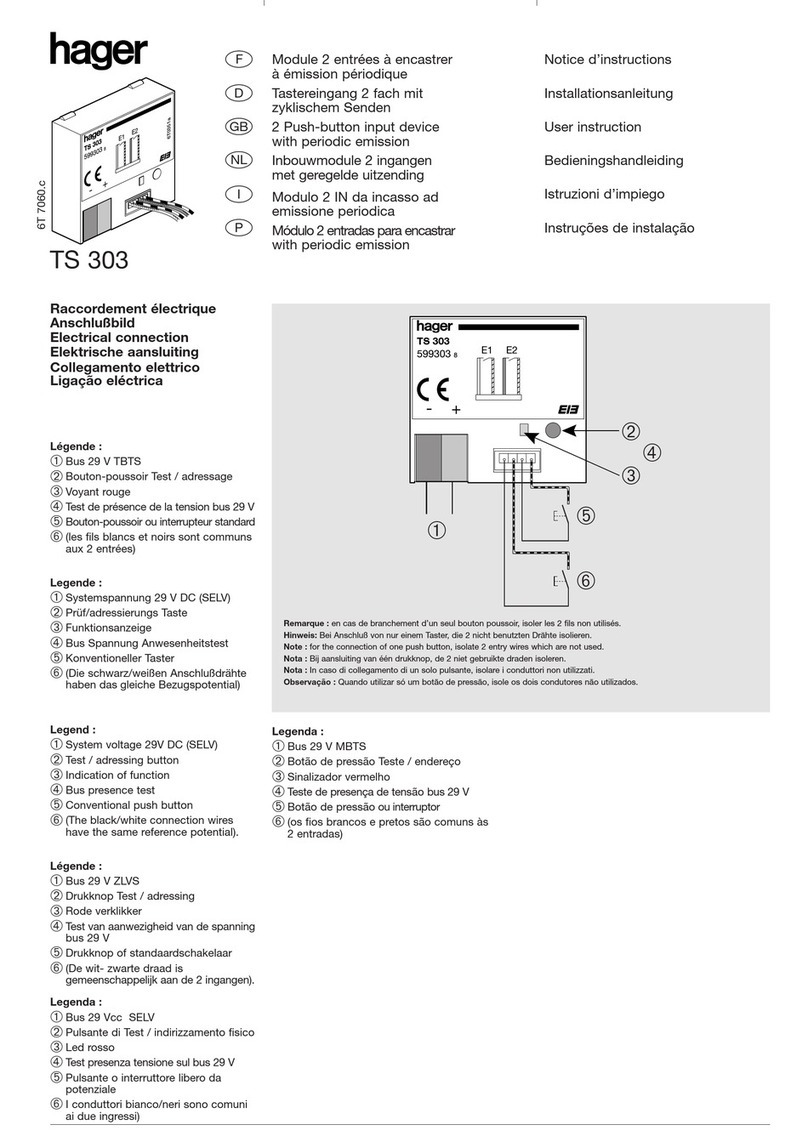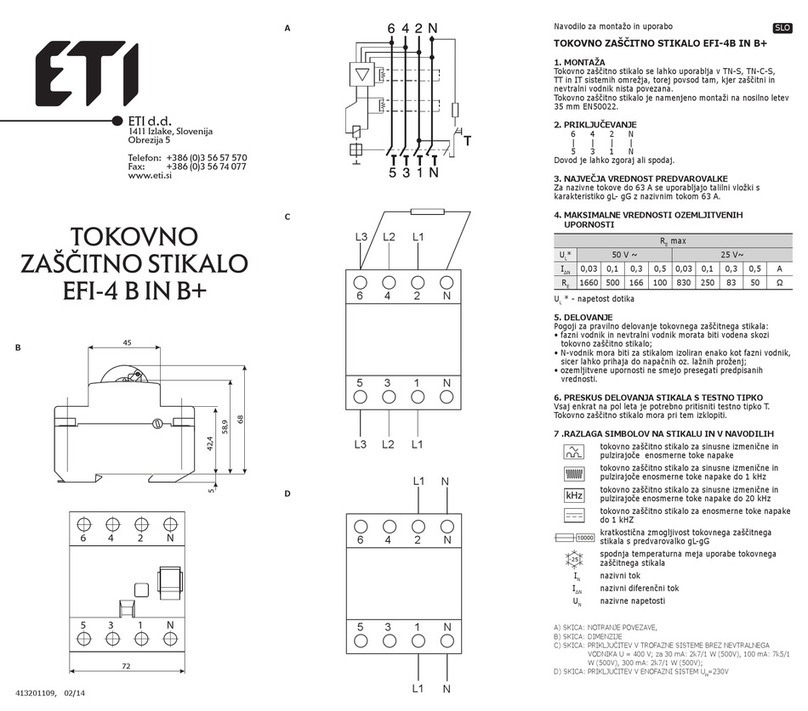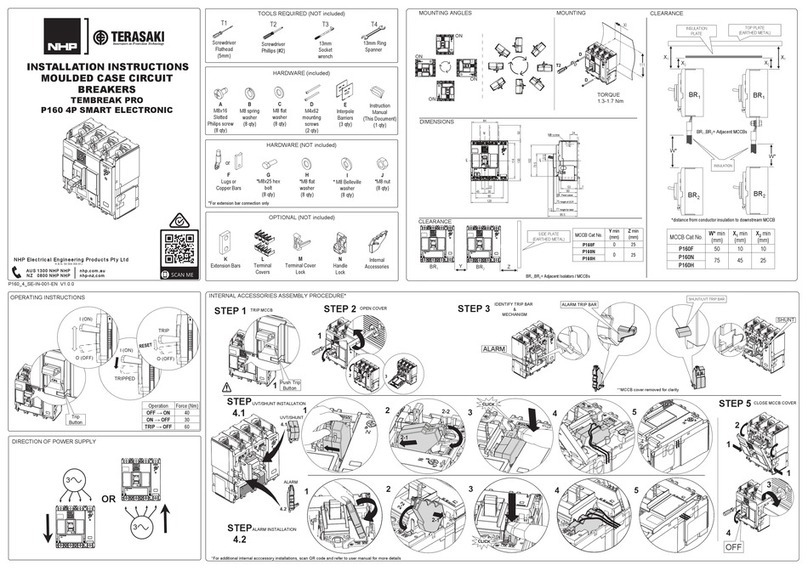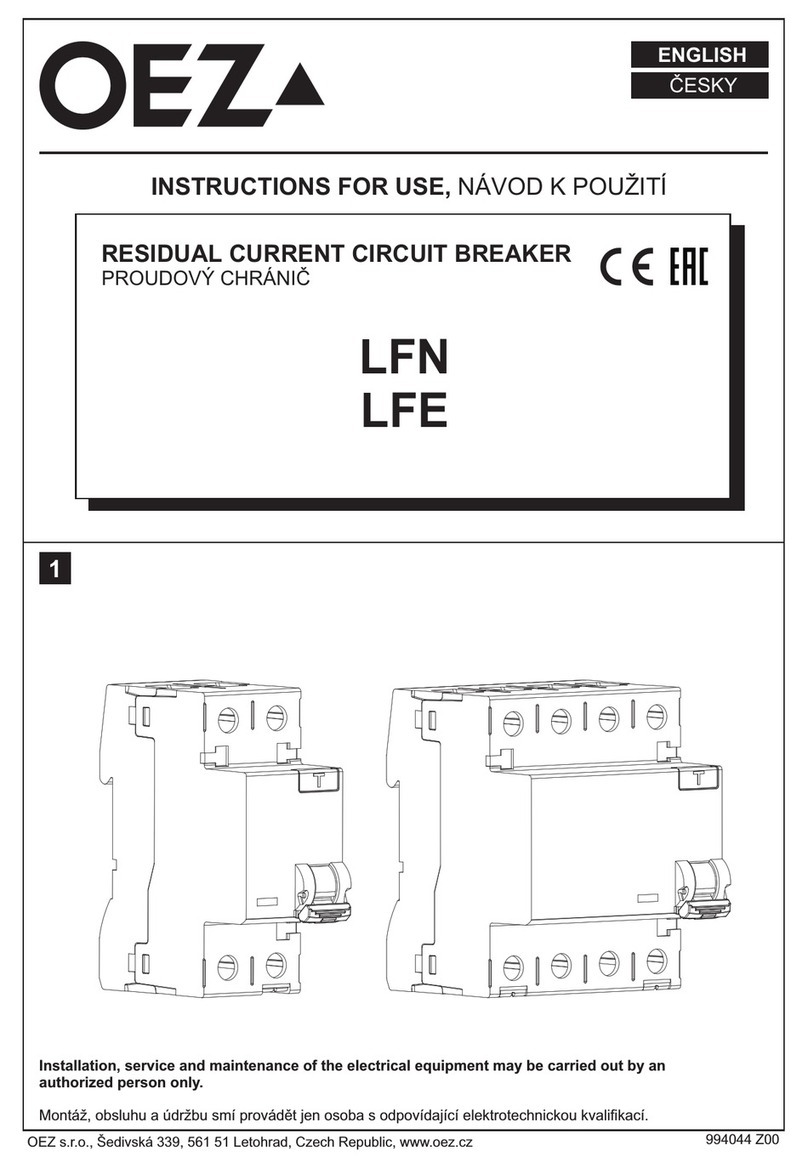
77
3.1 Function of the circuit breaker
operating mechanism
3.1.1 Magnetic actuator (Figure 9/12)
The actuator is the heart of the circuit breaker
operating mechanism. It combines the following
integrated functions:
• latching in the limit positions,
• release,
• switching.
The actuator is a bistable permanent magnet
system in which the armature motion is effected
by activating the ON or OFF coil. In the limit
positions, the armature is held in place
magnetically by the field of two permanent
magnets. Release of a switching operation is
effected by exciting one of the two coils until the
latching force of the permanent magnets is
exceeded temporarily.
3.1.2 Opening and closing procedure
(Figures 9/11 to 9/12)
The opening and closing processes can be remote
controlled by applying a voltage to input -MC (ON)
and -MO1 (OFF) (see also sections 10.1.1a and 6.2).
The breaker can be operated locally by pressing
push-buttons 3 and 4.
In the closing process, the armature motion acts
direct via lever shaft 18 on the moving contact
24.1 until the contacts meet.
In the further motion sequence, the pretensioned
spring arrangement 20 is tensioned to 100 % and
the necessary contact force thus applied. The
available overtravel is greater than the maximum
contact burn-off throughout the life of the
vacuum interrupter.
3.1.3 Reclosing sequence
The operating mechanism is fundamentally
prepared for reclosing, and with the short
recharging time of the storage capacitor (max. 5
s) it is also suitable for multi shot reclosing.
3.1.4 Circuit breaker controller
The control module is available as a standard
version and as a full version.
3.1.4.1 Function of the standard version
All the conditions for control of the opening and
closing commands to the magnetic actuator are
defined in a microprocessor:
• Supply voltage must be applied to the AC/DC
converter.
• The storage capacitor must be sufficiently
charged for the next switching operation:
—
3. Function
Switch position Storage capacitor-energy for
OFF ON and OFF
ON OFF
• The closing coil can only be activated when the
breaker is OFF.
• Closing is disabled when an opening command is
simultaneously active.
• Deactivation of the opening or closing coil takes
place when the relevant limit position has been
reached.
If the ON limit position is not reached within
70 ms during a closing operation, an opening
operation is immediately initiated so as to ensure
a defined switch position in all cases.
• The anti-pumping system ensures that only one
ON-OFF operation is performed when a closing
command is active and followed by an opening
command. The active closing command must be
cancelled and reset for the next closing operation.
• Activation of the closing coil (-RL1) can be blocked
by an external blocking signal.
• Input -RL1 “closing lock-out” (closed circuit shunt
release) must be energized for the circuit breaker
to be closed.
• In the as-delivered condition of devices for
stationarymounted installation (without wiring),
this input is therefore provided with a voltage of
80 V by an internal circuit as soon as the storage
capacitor is charged.
• If this closed circuit shunt release -RL1 is used to
monitor an external voltage, the voltage to be
monitored is to be applied to this input.
3.1.4.2 Extended functions in the full version
In addition to the functions of the standard
version, the full version contains the following
functions:
• Untervoltage release -MU
This input switches the VM1 off if the voltage
applied falls below the tolerance range stipulated
in IEC 62271.
The nominal value of the voltage to be monitored
is set at the works in accordance with the
specification in the order.
In order to prevent switch-off when the voltage
briefly falls below the specified level, a tolerance
time can additionally be set.
If no voltage is applied to -MU, the VM1 cannot be
closed normally. However a closing support
function is provided, that can enable the closing
operation even if no voltage is applied to -MU. If
after this closing operation no voltage is applied
to -MU, the VM1 will switch off.

